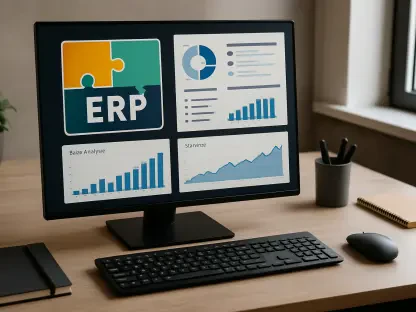Listen to the Article
In today’s release-driven economy, the biggest threat to innovation isn’t bad code, it’s manual process debt. Elite-performing teams deploy code on demand, multiple times per day, with a change failure rate of less than 15%. This level of performance is impossible with manual processes. If anything, manual workflows stall innovation, waste developer time, and quietly build the technical debt that slows teams down.
As release cycles speed up, process debt leads to fragile code and costly shortcuts. The fix isn’t working harder; it’s smarter systems. This article explores automation and shows how replacing friction with flow can turn your operations from liability into a strategic developer advantage.
When Meetings Outnumber Code Commits
Process debt happens when outdated or inefficient development practices stand in the way of productivity and collaboration. It is the friction caused by ambiguous workflows, manual handoffs between teams, and a lack of standardized environments. As a result, this debt reduces output, raises error rates, and inflates costs.
Vague processes repel engineers. Clear, automated workflows, co-designed by IT and leadership, create the alignment needed for scalable delivery. That’s why IT leaders must collaborate with their C-level peers to refine and communicate transparent workflows that deliver clear value and align with strategic goals. One of the most effective ways to pay down process debt is through an extensive continuous integration and deployment pipeline. These automated systems handle everything from code merges and builds to testing and deployment, enforcing consistency at every development stage.
Manual deployment processes often require extensive coordination between development, quality assurance, and operations teams. In some environments, deployments may take an entire day and occur only once every couple of weeks. Rollbacks can be frequent, affecting production releases, due to inconsistent environments or human error. But automated rollbacks can cut cold start time by 40%, enhancing system stability.
Implementing an automated CI/CD pipeline with tools like Jenkins and Ansible enables organizations to shift to daily, on-demand deployments. This implementation transition significantly reduces the change failure rate, improving incident response and cutting mean time to recovery from several hours to minutes. But even with streamlined workflows, debt can resurface during testing if validation processes remain manual.
Your Tests Shouldn’t Be Lucky Guesses
Test debt accumulates when sprint deadlines leave no room for full test cycles, forcing developers to debug under pressure or skip regression tests entirely. At the same time, vague requirements and shifting scope only make matters worse. When testing is compromised, system stability collapses, and critical failures eventually reach production.
An estimated 50% of a developer’s time is spent on debugging and fixing issues, much of which could be caught earlier with better testing. Unresolved backlogs frustrate testers and drive top talent away, eroding team morale. These system failures translate directly into financial losses from remediation, customer turnover, and increased hiring expenses.
Automated testing frameworks are the antidote. Tools like Selenium, Cypress, and Playwright can execute thousands of tests in minutes, providing immediate feedback on every code commit. This precision ensures that new features don’t break existing functionality.
To address test debt effectively, engineering leaders should:
Prioritize test automation: Integrate automated unit and end-to-end tests directly into the continuous integration and deployment pipeline. These tests ensure consistent, repeatable validation across builds and reduce reliance on time-consuming manual testing. Prioritizing this approach accelerates feedback loops, helping teams detect and fix issues earlier in the development cycle.
Define clear quality gates: Establish non-negotiable quality criteria that must be met before code can be promoted to the next environment. These gates might include minimum code coverage thresholds, zero critical bugs, or successful completion of all automated tests. By enforcing these standards, teams maintain a consistent level of quality and reduce the risk of defects reaching production.
Measure and Monitor: Track key metrics like code coverage, test pass rates, and bug escape rates to identify recurring problem areas. Regularly reviewing this data helps teams detect patterns, prioritize improvements, and make informed decisions about where to invest testing effort. Ongoing measurement fosters accountability and continuous improvement in both code and test quality.
Beyond testing, technical debt quietly compounds in the code itself, and automation again plays a central role in managing it.
Tame Technical Debt Before It Tames You
Technical debt is the implied cost of rework caused by choosing an easy, limited solution now instead of using a better approach that would take longer. While some technical debt is a necessary trade-off to meet business deadlines, when unmanaged, it can cripple a product. It leads to code that is difficult to understand and extend.
Automation provides a powerful set of tools for keeping technical debt in check. Static analysis tools like SonarQube can be integrated into the development workflow to automatically scan code for bugs, vulnerabilities, and code smells. A tool like this one gives developers real-time feedback, helping them write cleaner and more secure code from the start.
What’s more, dependency management tools such as Renovate or Dependabot automate the process of keeping third-party libraries up to date. This proactively addresses security vulnerabilities and ensures the application benefits from the latest performance improvements. The integration of AI and machine learning is pushing this further, with tools that can predict potential bugs, suggest code optimizations, and even automate parts of the refactoring process.
Your 90-Day Path to Automation Success
Transitioning to an automation-first culture requires a deliberate, phased approach. Jumping in too quickly can overwhelm teams and lead to poorly implemented solutions that don’t scale. Instead, start with high-impact areas, demonstrate quick wins, and gradually build momentum across teams.
First 30 Days: Audit workflows, identify bottlenecks, and select a pilot project.
Next 60 Days: Implement CI/CD for the pilot, train teams, and track metrics like deployment frequency and mean time to recovery.
Final 90 Days: Scale to other teams, expand automated testing, and explore infrastructure as code.
By systematically addressing process, test, and technical debt, organizations can transform their development capabilities. Automation is the engine of this transformation, turning potential liabilities into opportunities for sustainable growth and innovation.
Conclusion: Build for Tomorrow
Process, test, and technical debt are signs that it’s time to evolve. Automation turns those inefficiencies into strategic advantages, accelerating deployments, improving quality, and building resilient, scalable teams ready for tomorrow.









